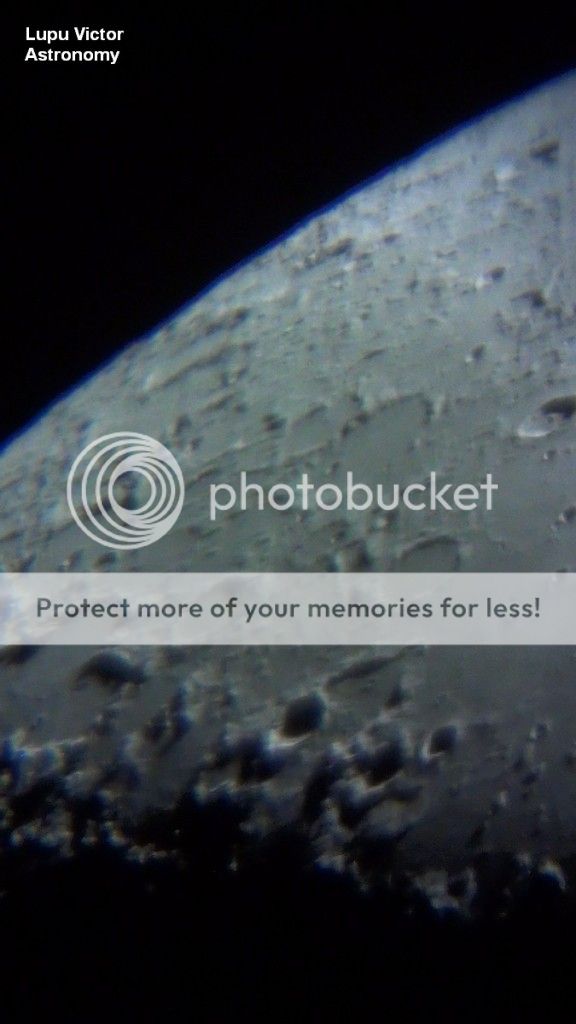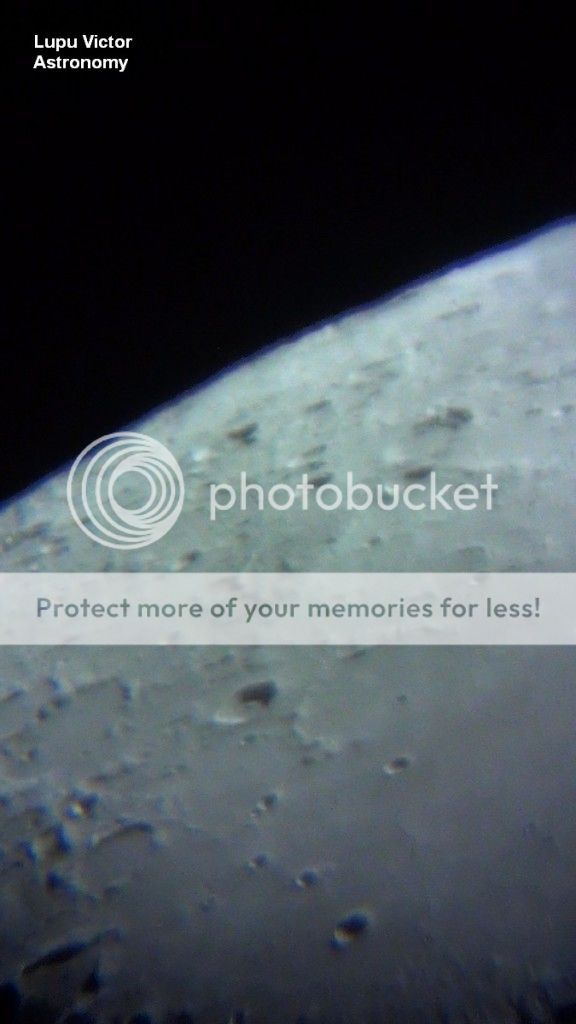Friday, 18 January 2013
Arnold and Democritus. North Moon craters seen through the telescope.
By telescopes with higher powers, you can identify impact craters north of Aristoteles, as Sheepshanks (25 km), C. Mayer (38 km) and Arnold (95 km).
Democritus was once a prominent crater. This area of the Moon is an interesting challenge for observation.
The closest sea of hardened lava of these craters, is Mare Frigoris, located to the south. In the photo, the mare (sea), can be identified as large the area without bumps and its darker.
Arnold crater (95 km), have a smooth floor, without central peaks, indicating that it was flooded by lava in the past. Inside on the west, you can distinguish a small crater. South wall, as shown, is almost absent (though perhaps this is because the light from the Sun), indicating that lava broke through that area in the crater. Northeast, very close to Arnold, is a crater, Arnold A (57 km), which seems to be a perfect replica of Arnold, but it is smaller in size, and it has no smaller crater on its floor.
Unlike Arnold, Democritus (39 km), a visibly smaller crater, located southeast of it, is has central peaks, and is deeper. From this, it starts a total of 5 craters on Mare Frigoris row chain.
Another crater, located southwest of Arnold, is Kane (55 km), which also does not have peaks in the center, and any other subsequent craters on the floor. It is located on the "shores" of Great Frigoris.
Craters C. Mayer (38 km), C. Mayer B (36 km) and Sheephanks (25 km), are all immersed in the dark in these images due to low sun angle at the time. However, their edges are lit beautifully, giving the impression that it's some rings.
Optics: Celestron C8-Newtonian telescope, 20mm Plössl, 2x barlow
Mount: CG5 (EQ5)
Camera: Sony CX130
Filter: no
Date: 04/27/2012
Location: Baia Mare, Romania
Processing: video captures, FastStone Image Viewer
In the pictures below, a chain of five craters on Mare Frigoris, which starts at a greater called Democritus. This is not only one of its kind, because not far from the chain, there is another one, on Mare Frigoris, which consists of 7 craters.
In this image taken on May 6, 2011, are included both chains of craters at the north of the crater Aristoteles (which are seen in the photos above), and one that starts from the crater Epigenes.
IMAGES AND VIDEOS
About me
(8)
Astronomical Phylosophy
(5)
Astronomy Labels
(1)
Astronomy terms
(5)
Craters-Reinhold and Lansberg
(2)
Craters-Santbech
(5)
DSLR Hyperion pictures
(4)
DSLR astronomy pictures
(4)
DSLR telescope pictures
(21)
Occultations
(5)
Rima Ariadaeus
(4)
Rupes Altai
(10)
The colours of the Moon
(7)
Things about the Moon
(9)
Weird sightings
(8)




 Friday, January 18, 2013
Friday, January 18, 2013
 Unknown
Unknown












 Posted in:
Posted in: 


0 comments:
Post a Comment